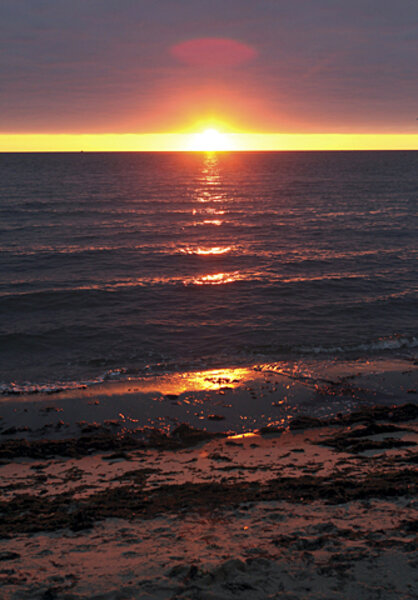Cape Wind project will be big test for offshore wind energy
Loading...
The long-embattled Cape Wind project that recently won federal approval marks the first offshore wind-power generation venture in the United States and paves the way for a wave of similar proposals now waiting in the wings.
While US wind resources are massive, most are on land in the wind-swept Plains states. America has more than 35,000 megawatts of land-based wind generation (the same generating capacity as 35 large coal-fired power plants), but none offshore.
Now, after nearly a decade of battles pitting Massachusetts' Cape and island residents, Indian tribes, and influential politicians against one another and project developers, the offshore wind energy industry is poised to grow, US officials say.
"We are beginning a new direction in our nation's energy future, ushering in America's first offshore wind energy facility and opening a new chapter in the history of this region," says Secretary of the Interior Ken Salazar.
Cape Wind, which plans to put 130 wind turbines – each at least 400 feet above sea level – across a swath of Nantucket Sound, is expected to provide enough energy to power about 200,000 homes.
It will probably be the first of several ventures that will produce about 8,000 megawatts of offshore generating capacity by 2025. About two-thirds will be concentrated in New England, New York, and the mid-Atlantic states, according to IHS Emerging Energy Research in Cambridge, Mass.
"This is a very symbolic step for the offshore wind industry," says Matt Kaplan, a senior wind industry analyst at IHS. "Cape Wind has been the offshore wind pioneer in the US. If the project is completed, it would signal the beginning of a new industry in the US."
While IHS anticipates offshore wind farms in Hawaii and California and along the Gulf Coast, development probably will emerge most quickly across the Northeast, Mr. Kaplan says. That's where energy prices are higher and where regulators are requiring that an increasing share of generation come from renewable sources. In contrast, due to low power prices and onshore wind resources, development probably won't surge in the Great Lakes area, Kaplan says.
Power costs are a huge issue for wind projects. Offshore power is currently about twice as expensive as onshore wind generation.
But the potential of offshore wind in the US is significant. About 90,000 megawatts of power could be generated in shallow US waters alone, estimates the National Renewable Energy Laboratory. That's about triple the capacity of today's onshore generation.
The Cape Wind project could spark an offshore wind industry that will compete globally, say both Mr. Salazar and Massachusetts Gov. Deval Patrick.
"The US is 20 years behind Europe, and China is pulling ahead," says Governor Patrick. "If we get clean energy right, the whole world will be our customer."
Approving the Cape Wind project was difficult, Salazar notes, because of its proximity to important vistas, some considered sacred by local Indian tribes. Accordingly, approval required that additional archaeological research be done to ensure that native sacred areas are protected.
A letter from governors of Northeastern coastal states was a big factor in Salazar's decision. It protested a federal historic panel's recommendation that the wind farm not be approved. If the panel's advice were followed, the governors noted, most wind project proposals along the East Coast probably could not go forward.
The regulatory battle may now shift from the federal government to the courts. The Aquinnah Wampanoag tribe on Martha's Vineyard has announced that it will file suit to halt the wind farm. Others are also phoning their lawyers.
"We're absolutely taking legal action," says Patty Dineen, a spokeswoman for the Alliance to Protect Nantucket Sound, which represents many island residents.
But Salazar says he's confident that his decision – backed by nine years of environmental and other reviews – will hold up in court: "There's no question in my mind that the review has been thorough."
For environmentalists, approval of America's first offshore wind project is considered important in the fight against global warming, because it substitutes renewable wind for fossil-fuel-based energy.
"It's going to have a huge impact," says Sean Garren, a spokesman for Environment America. "Some of the best wind resources in the country are off our shores. We need to get going harnessing those clean resources."





